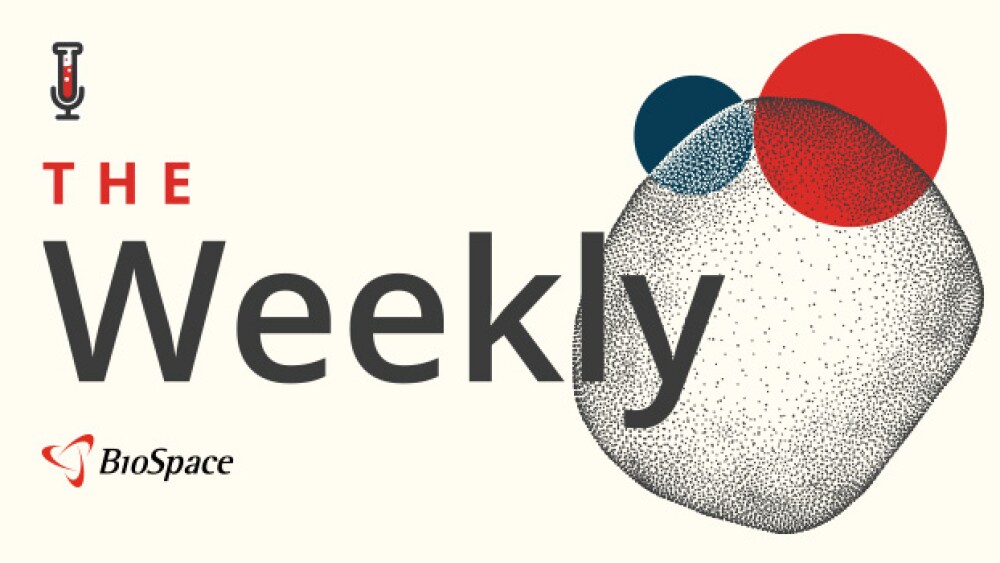BioNTech said in 2022 that it faced “threats of a groundless patent infringement suit” from a company that was “unable to bring to market any product to help in the fight against COVID-19.” Now, the mRNA biotech is buying that very company.
BioNTech’s $1.25 billion all-stock acquisition of CureVac brings together two German companies that have spent the past three years trading blows in the courts. Having painted CureVac as a failed rival that was trying to profit from its success, BioNTech now faces the task of integrating the biotech’s 1,000 employees into its operations.
BioNTech and partner Pfizer set out their views on CureVac in a lawsuit in 2022, claiming they faced “threats of a groundless patent infringement suit” from a company that was “unable to bring to market any product to help in the fight against COVID-19.” The partners’ lawyers took aim at CureVac’s vaccine development woes and its decision to start legal action.
“Unlike BioNTech’s and Pfizer’s efforts, CureVac’s failed, as it was unable to develop a COVID-19 vaccine product,” the Comirnaty developers said. “After this failure, CureVac turned its attention to an attempt to profit from the success of BioNTech and Pfizer through threats of patent infringement.”
Now, BioNTech and CureVac are cozying up together. The path from scientific rivals to legal adversaries to a single company was shaped by the diverging circumstances of the two companies during the pandemic.
A 3-Year Legal Battle
BioNTech and CureVac, along with Moderna in the U.S., pioneered the use of mRNA to treat cancer and protect against infectious disease. CureVac made the early running, advancing a prostate cancer vaccine into a Phase IIb trial that failed in 2017. Three years later, COVID-19 radically changed the fortunes of mRNA.
Both BioNTech and CureVac launched vaccine development programs but BioNTech moved fastest. Boosted by Pfizer’s support, BioNTech’s candidate became Comirnaty, the best-selling COVID-19 vaccine. CureVac landed deals with Bayer and GSK, received cash from the German government and reportedly became a buyout target for the U.S. government in President Trump Donald’s first term.
However, CureVac published clinical data on its vaccine candidate months after its rivals and the results fell well short of the bar set by Comirnaty and Moderna’s Spikevax. CureVac stopped development late in 2021 and, working with GSK, advanced a second-generation candidate into the clinic in March 2022.
Then the lawsuits started. CureVac alleged Comirnaty infringed a European patent and three German utility models in the summer of 2022. Utility models give the same rights as patents but are granted in weeks, rather than years.
The patent covers stabilized mRNA coding for a viral antigen. CureVac filed the application in 2002. One utility model, which CureVac filed in February 2021, covers a COVID-19 vaccine. The other utility models, which date back to 2015, address ways to boost protein expression. At the time, analysts estimated the lawsuit had $500 million of “potential upside” for CureVac.
BioNTech and Pfizer filed a complaint in Massachusetts around the time CureVac began its legal attack in Europe, seeking a judgment of non-infringement by Comirnaty of three U.S. patents. The action came thick and fast across the rest of 2022. CureVac added another European patent to its lawsuit. Between them, BioNTech and Pfizer filed to invalidate one patent in Germany, took action against two patents in the U.K. and requested the cancellation of the three utility models.
The legal action continued in 2023. In the first half of the year, a German court supported the validity of a CureVac patent in a preliminary opinion, BioNTech and Pfizer filed oppositions against a EU patent and CureVac submitted a counterclaim in the U.S. alleging infringement of six more patents by Comirnaty.
CureVac opened another front in the legal fight in July 2023, claiming infringement of one patent and two utility models in a lawsuit in a regional court and expanding its counterclaim in the U.S. Over the following months, courts suspended infringement rulings for two patents and three utility models.
Events began to turn against CureVac in December 2023, when a German court nullified its stabilized mRNA patent after an oral hearing. A written judgment with reasons for the nullification arrived in April 2024, followed swiftly by an appeal from CureVac. In the second half of 2024, courts in Germany and the U.K. ruled CureVac patents invalid and several utility models were withdrawn from the cases and canceled.
Yet, the story twisted back in CureVac’s favor in March of this year, when the European Patent Office declared a CureVac patent valid. CureVac won another validity decision in May. The victories teed up a hearing into whether BioNTech infringed the patents. The court was scheduled to hear the arguments on July 1. Now, BioNTech is set to neutralize the legal threat by acquiring CureVac in the all-stock deal.
Analysts were somewhat confused by the deal itself, but many noted that the removal of the litigation threat was a positive for BioNTech.
“By acquiring CureVac, ongoing litigation related to BioNTech’s mRNA technology is likely to be resolved, potentially removing the possibility of damages that could have loomed prior,” BMO Capital Markets wrote.
Integrating Rival Organizations
It is unclear what the merger means for CureVac’s programs. CureVac has said its drug candidates “face direct competition from companies such as Moderna and BioNTech.” Soon, those direct competitors will be part of the same pipeline, assuming the deal goes through.
As for CureVac’s employees, of which there were close to 1,000 at the end of last year, the future is also uncertain. BioNTech will integrate CureVac’s research and manufacturing site in Tübingen, Germany, into the larger company’s network of facilities. The integration will align with BioNTech’s ongoing group-wide transformation from pandemic warrior back to its oncology roots.






